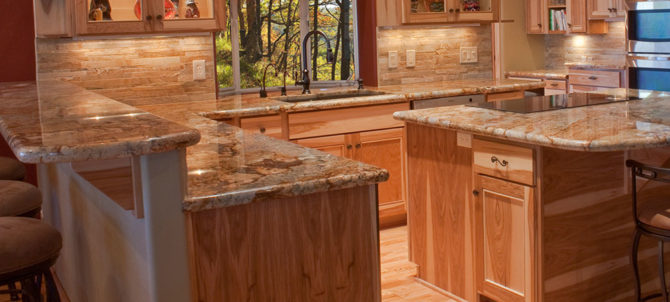
Do you have dull marble countertops and don’t like their unappealing look? Don’t worry as you can easily restore gleam. How do you do it? Here are steps on how to polish marble:
Step 1: Clean the countertops
Cleaning the countertops ensures you start with a clean slate. Use a soft, dry cloth to remove any surface dirt and debris, then wet a non-abrasive sponge with warm water and use it to wipe the marble top again.
Spray the marble surface with a commercial stone cleaner and wipe it off with a clean, soft rag or a mild dishwashing liquid. Once you are done, rinse it well with plain water.
If you used a commercial cleaner, use a clean damp rag to wipe the marble cleaner. You should then dry with a chamois or an unused microfiber cloth.
Step 2: Remove stains
Since marble is porous, it tends to easily develop stains, especially if you don’t take good care of it. Before you proceed with polishing, you need to get rid of these stains. How do you do this?
If you have the budget, buy a commercial marble stain remover. If you don’t have the money or you love making your own things, you can make your own stain remover by mixing one tablespoon of ammonia into a half cup of hydrogen peroxide then slowly add just enough baking soda to make a thick, creamy texture.
You should then spread the poultice over the stained areas using a clean paintbrush and cover it with a plastic wrap. Leave the poultice in place for 12-24 hours, remove the wrap and let it dry out completely.
Using a razor blade, carefully scrape the crumbly poultice while taking care you don’t gouge or dig at the marble surface. You should then clean away any remaining poultice residue with a damp cloth then wipe the marble dry.
Step 3: Buff out the etching with a polishing powder
If your countertops have severe etching, don’t waste your time or money with polishing powder. Instead, hire a professional to look into it. On the other hand, if your countertops have minor etching from acidic foods and cleansers, you can remove them easily using a polishing powder that you can buy from a home improvement store.
After getting the powder, wipe it over the etched areas with a water-dampened cloth, then sprinkle small amounts of the powder onto the etched spots. You should then gently buff the powder into the blemishes with a damp cloth, then follow with a clean, damp rag to the powder residue.
You should finally wipe the countertops dry to reveal the restored shine.
Step 4: Seal the countertops.
After polishing the surfaces, seal the marble countertops to retain the shine and resist major stains. You can use topical or impregnator sealants.
From their name, topical sealants sit on the top of the marble and prevent staining while impregnators go below the surface and repel water and oils while still allowing marble to breathe.
Your countertops will look best when you seal them with an impregnator.
You can do the sealing by yourself or let a professional handle it. If doing the work yourself, begin purchasing the sealant from your local hardware store, then apply it on the surface.
After applying the sealant, give it a few minutes to dry. You should note you shouldn’t let it fully dry as it will streak. After 10-20 minutes, wipe off the sealant residues using a dry cloth.
You should then allow your marble to sit 6-8 hours without placing anything on it.
Retaining the shine
Other than sealing the countertops, you need to take good care of your countertops, so you maintain the shine. How do you do this?
Clean the surfaces with the right products: While you might be up to good when cleaning the surfaces, you might be harming them by using the wrong products. As a rule of thumb, you should never use bleach or cleaning products containing alkaline or any acidic substances as they will degrade the sealer and expose your countertops.
Remove spills as soon as they happen: Even if you have sealed your kitchen countertops Raleigh, it’s stupid to leave the liquid on the surfaces for a long time as it tends to penetrate the porous marble, leaving ugly stains that are difficult to remove.
To ensure this doesn’t happen, make it a habit to clean spills as soon as they happen or as soon as you notice them.